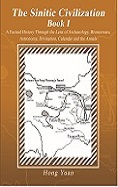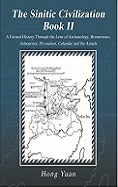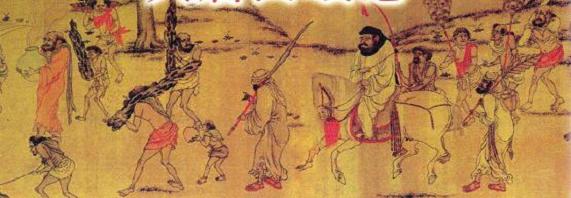
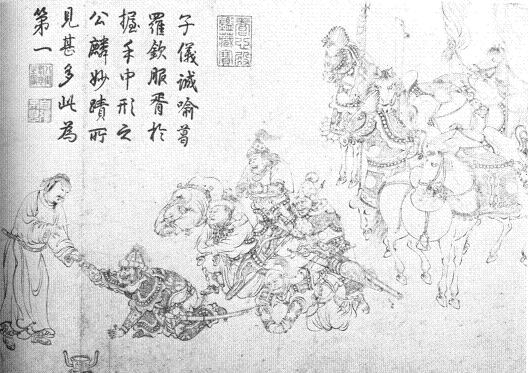
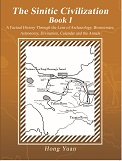
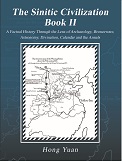 This website's contents are the result of 20 years' writings --that could be compared to the "archaeological deposits" in a literary sense.
The freelance-style writings on the website were not proof-read.
Portion of the writings, i.e., related to Pre-History, Xia, Shang, Zhou, Qin, and Han dynasties, was extracted, polished, reconciled, and synthesized into
The Sinitic Civilization - Book I which is
available now on
Barnes & Noble,
Amazon,
Google Play|Books
and
Nook.
Book II is
available now on
Amazon
and Barnes & Noble.
Check out this webmaster's 2nd edition --that realigned Han dynasty's reign years strictly observing the Zhuanxu-li calendar of October of a prior lunar year to September of the following lunar year
and
cleared this webmaster's blind spot on the authenticity of the Qinghua University's Xi Nian bamboo slips as far as Zhou King Xiewang's 21 years of co-existence with Zhou King Pingwang was concerned.
To give the readers a heads-up, this webmaster had thoroughly turned the bricks concerning the Sinitic cosmological, astronomical, astrological, historical, divinatory, and geographical records, with the indisputable discovery
of the fingerprint or footprint of the forger for the 3rd century A.D. book Shang-shu (remotely ancient history),
and
close to 50 fingerprints or footprints of the forger of the contemporary version of The Bamboo Annals --a book that was twice modified and forged after excavation.
All ancient Chinese calendars had been examined, with each and every date as to the ancient thearchs being examined from the perspective how they were forged or made up.
Using the watershed line of Qin Emperor Shihuangdi's book burning to rectify what was the original before the book burning,
this webmaster filtered out what was forged after the book burning of 213 B.C.
This webmaster furthermore filtered out the sophistry and fables that were rampant just prior to the book burning, and validated the history against the oracle bones, bronzeware and bamboo slips.
There are dedicated chapters devoted to interpreting Qu Yuan's poem Asking Heaven, the mythical mountain and sea book Shan Hai Jing, geography book Yu Gong (Lord Yu's Tributes), and Zhou King Muwang's travelogue Mu-tian-zi Zhuan, as well as a comprehensive review of ancient calendars, ancient divination, and ancient geography.
One chapter is focused on the Huns, with a comprehensive overview of the relationship between the Sinitic people and the barbarians since prehistory.
The book has appendices of two calendars: the first Zhuanxu-li anterior quarter remainder calendar (247 B.C.-85 A.D.) of the Qin Empire, as well as a conversion table of the sexagenary years of the virtual Yin-li (Shang dynasty) quarter remainder calendar versus the Gregorian calendar, that covers the years 2698 B.C. to 2018 A.D.
Refer to
Introduction_to_The_Sinitic_Civilization,
Afterword,
Table of Contents - Book I (Index)
and
Table of Contents - Book II (Index)
for details.
This website's contents are the result of 20 years' writings --that could be compared to the "archaeological deposits" in a literary sense.
The freelance-style writings on the website were not proof-read.
Portion of the writings, i.e., related to Pre-History, Xia, Shang, Zhou, Qin, and Han dynasties, was extracted, polished, reconciled, and synthesized into
The Sinitic Civilization - Book I which is
available now on
Barnes & Noble,
Amazon,
Google Play|Books
and
Nook.
Book II is
available now on
Amazon
and Barnes & Noble.
Check out this webmaster's 2nd edition --that realigned Han dynasty's reign years strictly observing the Zhuanxu-li calendar of October of a prior lunar year to September of the following lunar year
and
cleared this webmaster's blind spot on the authenticity of the Qinghua University's Xi Nian bamboo slips as far as Zhou King Xiewang's 21 years of co-existence with Zhou King Pingwang was concerned.
To give the readers a heads-up, this webmaster had thoroughly turned the bricks concerning the Sinitic cosmological, astronomical, astrological, historical, divinatory, and geographical records, with the indisputable discovery
of the fingerprint or footprint of the forger for the 3rd century A.D. book Shang-shu (remotely ancient history),
and
close to 50 fingerprints or footprints of the forger of the contemporary version of The Bamboo Annals --a book that was twice modified and forged after excavation.
All ancient Chinese calendars had been examined, with each and every date as to the ancient thearchs being examined from the perspective how they were forged or made up.
Using the watershed line of Qin Emperor Shihuangdi's book burning to rectify what was the original before the book burning,
this webmaster filtered out what was forged after the book burning of 213 B.C.
This webmaster furthermore filtered out the sophistry and fables that were rampant just prior to the book burning, and validated the history against the oracle bones, bronzeware and bamboo slips.
There are dedicated chapters devoted to interpreting Qu Yuan's poem Asking Heaven, the mythical mountain and sea book Shan Hai Jing, geography book Yu Gong (Lord Yu's Tributes), and Zhou King Muwang's travelogue Mu-tian-zi Zhuan, as well as a comprehensive review of ancient calendars, ancient divination, and ancient geography.
One chapter is focused on the Huns, with a comprehensive overview of the relationship between the Sinitic people and the barbarians since prehistory.
The book has appendices of two calendars: the first Zhuanxu-li anterior quarter remainder calendar (247 B.C.-85 A.D.) of the Qin Empire, as well as a conversion table of the sexagenary years of the virtual Yin-li (Shang dynasty) quarter remainder calendar versus the Gregorian calendar, that covers the years 2698 B.C. to 2018 A.D.
Refer to
Introduction_to_The_Sinitic_Civilization,
Afterword,
Table of Contents - Book I (Index)
and
Table of Contents - Book II (Index)
for details.
|
|
Table of lineages & reign years:
Sovereigns & Thearchs;
Xia-Shang-Zhou dynasties;
Zhou dynasty's vassalage lords;
Lu Principality lords;
Han dynasty's reign years
(Sexagenary year conversion table-2698B.C.-A.D.2018; 247B.C.-A.D.85)
|
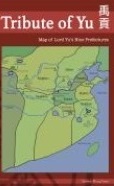

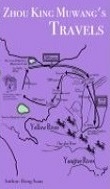
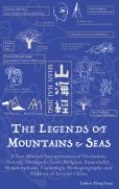
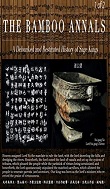
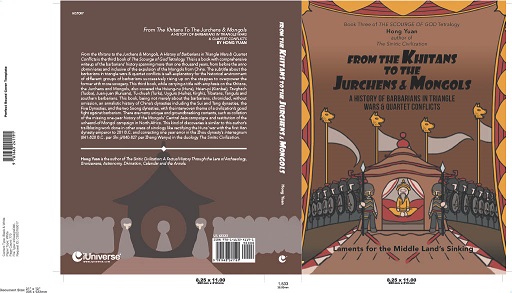
Epigraph|Preface|Introduction|T.O.C.|Afterword|Bibliography|References|Index
(available at iUniverse|Google|Amazon|B&N)
|
|
|
Below maps were added to the http://www.imperialchina.org/Barbarian.htm which was embedded within the
http://www.imperialchina.org/Huns.html and
http://www.imperialchina.org/Turks_Uygurs.html
pages.
On basis of the new archaeological findings and historical Chinese records, this webmaster will tentatively speculate on when the east met with the west.
First this webmaster wants to debunk the fallacies in regards to the equation of the ancient Yu-shi tribe to the Yuezhi, and the speculation on the jade trade that the Yuezhi was falsely accredited with.
The forged Guan Zi [管子] statement contained a reference which was a misnomer related to the 'Yu-shi' tribe, a term that was erroneously speculated by a few annotators in history, as well as by scholar Wang Guowei of the early 20th century,
to be the same as Yuezhi per soundex.
What Guan Zhong (Guan Zi) was alleged to have said was a statement using an ancient Chinese syntax to juxtapose two equally valuable things, i.e., the jade from the Yu-shi tribe to the north versus the pearls from the Yangtze to the south.
This webmaster likes to point out that the Yu-shi tribe [and the Bai-di barbarian --who enjoyed the same last name 'Ji1' as the Zhou Dynasty royal court, by the way] that Qi Lord Huan'gong purportedly campaigned against in the 7th century B.C. was right next to the East Yellow River Bend --if paraphrasing the Guo Yu and Guan Zi sentences literally, not the Yuezhi that was recorded in the 3rd century B.C. as dwelling between the Qilian mountain and the later Dunhuang grottos.
Not to mention that Guo Yu and Guan Zi's writings on Qi Lord Huan'gong and Guan Zhong (Guan Zi) were sophistry in the first place, not historical facts.
Guo Yu, a political discourse book that was similar to Zhan Guo Ce, could be merely Han dynasty Confucian compilings, while Guan Zi, i.e., the fabled Legalist founding master, was at most a political economy book written in the late Western Han dynasty or the Xin dynasty, at the turn of B.C. and A.D.
See this webmaster's discussion at tarim-mummies-and-the-introduction-of-chariots/page__st__15
Here, mark this webmaster's words: Yu-shi, having absolutely nothing to do with the Yue-zhi people [as erudite Wang Guowei claimed --a No. 1 blunder of the most famous Chinese scholar of the 20th century], could be taken as either the western Yu [Wu] or the northern Yu [Wu] remnants from the descendant of one of two elder Zhou brothers who 'emigrated' to the Yangtze River and the Taihu Lake 3000 years ago.
Qi Lord Huan'gong's 7th cent. B.C. campaign against the Bai-di and Yu-shi, a military action that the hegemony lord purportedly conducted to win the respect among the Zhou vassals on the ground of defending the Zhou Dynasty court, was an obscure record in the Chinese history. Around the Xin (New) Dynasty (AD 6-23) time period, there occurred
forgeries by the Chinese scholars, possibly with the intention of substantiating the mandate of the usurper Wang Mang's Xin (new) dynasty.
The classics which were proved to be forgeries
include "Guan Zi [管子]", which historian Ma Feibai pierced sentence by sentence.
(The book "Guan Zi [管子]" was very much a polemic political economy book which centered around the statesmen’s leverage of the economic policies in ruling a country, in which
extensive citation was made, albeit using the Han Dynasty and Xin Dynasty's terminologies and events unwittingly, such as the theme of the salt-iron debates of the Western Han Dynasty.
See Preliminary Discussions on the Forgeries in the Chinese Classics
for this webmaster's rebuttals on the additional forged books of Guan Zi.)
Using Ma Feibai's same logic, this webmaster found two other books, "Yi-zhou-shu" [逸周书] or "Zhou-shu" (Zhou Dynasty [1050 B.C. - 256 B.C. per forgery
The Bamboo Annals] [abbrev. 周书] book,
not the Zhou-shu [周书] from the Posterior Zhou Dynasty of the South-North Dynasty time period of AD 557-581) and "Shang[1]-shu" [商书] (Shang Dynasty [the 16-11th cent. B.C.; or 1559 - 1050 B.C.E. per The Bamboo Annals] book, not Shang[4]-shu [尚书], i.e., the remotely ancient book which was said to be abridged by Zuo Qiuming [Zuoqiu Ming]),
to be written in the exact same style and could be forgeries by possibly the same person[s].
In the apparently forged Yi-zhou-shu [逸周书] and Shang-shu [商书] books, you could find sentences redundantly listing the names
of the barbarian tribes and vassals as known in Han Emperor Wudi's reign (commonly-taken wrong reign 140-87 B.C. or 140-86 B.C.; nominal Oct 141-Dec 87 B.C.; actual Jan 141-Feb 87 B.C.), including the name of Yuezhi to be some alien tribe to have surrendered
tributes as early as during the Shang Dynasty, which was quite an irony, not to mention the forgery in conveniently penning a boundary of the Chinese Shang Dynasty's
central kingdom as well as positions of the various alien tribes and vassals per then-known knowledge as of the 1st century A.D.
Discarding the forgery of Guan Zi [管子] basically eliminated the whole foundation upon which the existence of the Yuezhi jade trade was built,
a fallacy which was widely cited by people inside and outside of China in
the most recent 10-20 years, i.e., the 1990s and 2000s, to the effect that the fabricated Yuezhi had lived close to the heartland of China, playing the role of bearing the Aryan civilization (i.e., the iron technology, chariots, etc.) to China.
As the time and space double-corroborated in Zhou King Muwang's travelogue,
there was no trace of the Yuezhi people in northwestern China at the time of Zhou King Muwang (reign [962-908 per the forgery contemporary version of The Bamboo Annals; 1006-952 B.C. per Zhang Wenyu), or more precisely at the approximate time of the 4th century B.C.E. when the book Mu-tian-zi was written, other than a wilderness of feathers extending
by 1000 li distance at the Da-ze (great lake or the Black Water Lake).
Absent the fallacious Yu-shi and jade reference in the above forged books, all the rest of the Chinese classics had only description about Mt. Kunlun, western queen mother, etc., like in the 4th or 3rd century B.C., not like since China's prehistory [re-written].
Liu Xie (? 465-520 A.D.), in Bian Sao (collating Li Sao poem) of Wen-xing Diao-long (Literary Mind and
Carved Dragons), a book of literary aesthetics, numerology and divination, claimed that Kunlun and
Xuanpu (hanging gardens) were not carried by 'Jing [five Confucian classics] {&} Yi [Zhou Yi/I Ching, i.e.,
or Book of Changes]'.
Quan Yuan, a Chu poet of the 3rd century B.C., talked about
the Yellow Thearch and the Kunlun Ruins in his poems.
Sima Qian, in Shi Ji, had a statement that
the Zhao state would be in danger as the three treasures, i.e., the
Dai state’s horses, the Hu barbarians' dogs, and the Mt. Kun-shan' jade, would not belong to the Zhao state. The Kun-shan jade,
a term also seen in Qin prime minister Li Si's writing, was referring to the mythical Mt. Kunlun as
seen in Mu-tian-zi Zhuan (i.e., Zhou King Muwang's travelogue), a book buried in Wei King Xiangwang
[reign 318-296 B.C.]'s tomb and excavated in A.D. 281.
In Yu Gong (Lord Yu's Tributes), there was a list of the states or tribes of Zhipi, Kunlun, Xizhi,
and Qu2-sou1 as comprising of the Xi-rong or Western Rong barbarians.
Queen Mother of the West, i.e., the purported matriarchal Qiangic nation's hereditary queen who was speculated to have her diplomatic activities with the Sinitic China
dating from the era of the Yellow Emperor [Huangdi (? fuzzy divinatory years BC 2697 - 2599; reign 2402-2303 with rule of 100 years per Zhu Yongtang's adjustment of the forgery contemporary version of
The Bamboo Annals],
could be actually 'xi-lao' or the Western Elderly [Woman] as hinted at by Huai Nan Zi.
The contemporary version bamboo annals' records on the thearchs were debunked by this webmaster as being pure forgery, by the way.
The Western Elderly [Woman] denotation corresponded with what Qu Yuan claimed in his poem as to 'huang-kao' for his own father [versus huang-kao-bofu for the elder
uncle], and with what Li-ji claimed in section on Qu Li (tortuous and trivial rituals) as to 'wang-fu' for the grandfather.
From Guan Zi, it could be actually seen that the western queen mother of the late Western Han dynasty was a deity who could be incarnation of usurper-emperor Wang Mang's aunt, i.e., the Western Han dynasty's dowager-empress.
That is, by the Han dynasty, the "western queen mother" legends of the late Warring States time period, who was portrayed as daughter of the lord on high in Mu-tian-zi Zhuan had mutated into a quasi-deity comparable to a dowager-empress.
There was a so-called Chinese 'scholar' called Yang Boda who since 1991 claimed that
the jades from the Shang tomb of empress Fu Hao [excavated in Anyang of Central China] were from Khotan, and hence he speculated on basis of the Guan Zi's [管子] forged statement that the Yuezhi
traded with China since prehistory.
The Chinese Academy of Social Sciences, in conjunction with the CCTV, organized a trip with several archaeological and geological scholars onboard, straight for Khotan, Xinjiang, where there was the tall Kunlun Mountains. After making a superficial inspection, they shot a documentary series "The Jade Road."
Those reporters, and scholars, unfortunately, do not know what the ancient books termed by the "Kunshan (Kunlun Mountain) Jade","Kun (Kunlun) Gang (hill) Jade", "Kunlun jade"
all referred to the jade from the [contemporarily-named] Qilian Mountain in Gansu [or more likely the mid-segment of the Helanshan Mountain Range on the west Ningxia riverbank of the Yellow River].
Though, if you read history word for word for what it was, then in the 12th, 11th or 10th century B.C.E., Zhou King Muwang had indeed resettled the barbarians at the origin of the Jingshui and Weishui Rivers, including the later five Rong groups named as Yiqu, Yuzhi, Wuzhi, Xuyan and Penglu.
The naming here contained some soundex more closely mapping the Yuezhi people than any other terms as recorded in the Chinese history, and more, the location was very much a match as well. (Among the five Rongs, the Yiqu-rong barbarians grew to be the most dominant group and controlled the majority of the central and northern Shenxi province as known today, till the 4th century and 3rd century B.C.E., when they were defeated and absorbed by the Qin empire.)
Twenty years of testing on the jade articles from the Xia, Shang and Zhou tombs, from which there were unearthed a large number of jade artifacts for ritual and oblation,
failed to link the artifacts to the Khotan jades. The test also eliminated the source of jades as from other major jade sites such as the Liaoning Xiuyan Jade mine in Manchuria, nor the inner land jade such as the Nanyang Dushan Jade mine in Henan Province.
Mt Kunlun, in ancient China, meant for Mt Qilianshan, with Kunlun meaning magnificent and heavenly, which the later Huns called by a similar name in their terminology, i.e., Qilian, a word meaning 'Heaven'.
In the late Western Jinn Dynasty, during the 5th century A.D., Zhang Gui, a Chinese magistrate at the Western Corridor (Ganzhou [Zhangye of Gansu], Liangzhou [Wuwei of Gansu], Guazhou [east of Gansu-xian/Anxi-xian of Gansu], Shazhou [Dunhuang of Gansu]), established,
at the northern foot of Qilian Mountain, the Former Liang State (A.D. 301-76). Serving under him will be a Jiuquan magistrate who pointed out that the Qilian Mountain southwest of Jiuquan would be where Zhou King Muwang met the Queen Mother of the West.
This webmaster, tracing the itineraries of and leagues travelled by King Muwang in Mu-tian-zi Zhuan, derived the same conclusion.
At http://www.imperialchina.org/Zhou_Dynasty.html this webmaster previously stated
that "Zhou King Muwang (r. 1001-946 BC [962-908 per the forgery bamboo annals]; 1006-952 B.C. per Zhang Wenyu) was a legendary figure famous for fighting in the west -- and per Charles Hucker maybe today's Central Asia --
where he met and had rendezvous on Kunlun Mountain with so-called 'Xi Wang Mu', namely, the Queen Mother of the West, who was rumored by the Western historians,
including Charles Hucker, to be the Queen of Sheba. Note that Western Queen Mother had the prototype in an "earth mother" deity, not related to Queen Sheba of Charles Hucker.
The actual place for the Kunlun Mountains would be
somewhere close to today's Jiuquan County, Gansu Province. Or, also likely, it could be today's Mt Helanshan on the west bank of the West Yellow River Bend.
At http://www.imperialchina.org/Huns.html this webmaster stated that
Zhou King Muwang was noted for defeating the barbarians, reaching today's Qinghai-Gansu regions in the west, meeting with the Queen Mother of West on Mt Kunlun [possibly around the Dunhuang area], and then relocating the barbarians eastward to the starting point of the Jing-shui River for better management [in a similar fashion to Han Emperor Wudi (commonly-taken wrong reign 140-87 B.C. or 140-86 B.C.; nominal Oct 141-Dec 87 B.C.; actual Jan 141-Feb 87 B.C.)'s relocating the Southern Huns to the south of the north Yellow River Bend]."
At the upperstream Weishui and Jingshui rivers, there was a yellow mud plateau named the Queen Mother Palace where Xu Haidong's Red Army fought a battle.
As to Zhou King Muwang's travelogue, it could be a 4th century B.C.E. fiction that was built on the limited early Zhou Dynasty records as well as the then-available knowledge about the northwestern frontier as of maybe the 4th century B.C.E.
About this place, the early Zhou kings fought numerous battles called by Tai-yuan or the grand plateau, a name that was later ported to Taiyuan of today's Shanxi.
Later, at about this place, the Qin state had treated a grassless lake, called by the Chao-na Lake, as a dragon deity, with Qin Emperor Shihuangdi personally travelling to the lake and making sacrifice at one time.
Zhou King Muwang, whose reign was about half a century, did not actually travel across the whole domain of China as the travelogue stated. Zhou King Muwang did campaign against the barbarians in the 11th-10th centuries B.C.E. and rounded up some of the barbarians for resettlement at the origin of the Jing-shui/Wei-shui Rivers, which caused the other part of the [unconquered] barbarians to stop sending the tributes or paying visits to the Zhou court. The [conquered] barbarians, who resettled at the Jingshui and Wei-shui rivers, could later have moved east to first be part of the Li-rong barbarians who sacked the Western Zhou capital Haojing and then crossed the East Yellow River Bend to be the so-called Bai-di and Chi-di barbarians, namely, the so-called Quan-rong barbarians that Zhou King Muwang purportedly met in today's northwestern Shanxi Province in the travelogue which was written in the 4th century B.C.E.
This was the Tang dynasty historians' way of bundling all ancient barbarians under the same-origin exiles called San-miao, a group of people mentioned in Mu-tian-zi Zhuan as the Chong-shi people, or the Tao-wu barbarians in Zuo Zhuan.
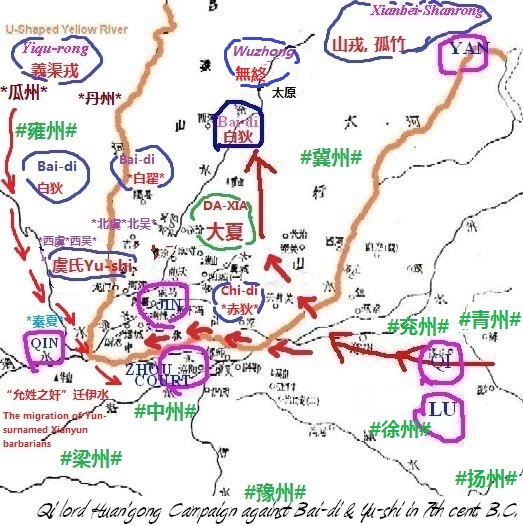 This webmaster likes to quickly debunk one more myth before continuing on to the topic of barbarians and the human migration.
People who had been propagating the Aryan bearers of the Chinese civilization, like by J. P. Mallory and Victor H. Mair, and et al., had one more
claim in regards to what the "giants" meant in Shi-ji, other than the Yuezhi jade trade fallacy.
Sima Qian, in Shi Ji, recorded an episode about Qin Emperor Shihuangdi's collecting the weapons from China for destruction.
When the emperor read about the reports that some giants wearing the Yi-di barbarian clothes
were spotted
to the west of Xianyang (Chang'an) the capital, he ordered the metals to be melted and made into 8 bronze [and aluminum] statutes in the image of the giants -- which were not what J. P. Mallory and Victor H. Mair speculated to be the "Caucasians" simply because they were recorded to be taller than today's Chinese.
What happened was that the ancient Chinese were much taller, while the ancient Europeans were much shorter, with the shortfall due to the massacre of the ethnic Chinese by the Mongols and Manchus, the malnutrition of the enslaved Chinese under the alien rule, and the high protein intake of the Europeans ensuing from the development of the Industrial Revolution.
The gates of the London towers are good measure of the height of the ancient Europeans.
The Sinitic cousin tribe carrying the N-haplogroup genes, i.e., ancestors of the Finland people, could be the tall people as excavated in the Jiahu tombs.
Another school of thought, which was intended to discredit the Yellow Civilization, would be the false claim that the Sinitic Civilization "began in 3000 B.C. at Liangzhu", namely, the Yangtze River estuary --which was a taken-out-of-context judgment on the new findings from the multiple Neolithic sites and their age from across China.
Still another school would be the claim that the Shang Chinese were the ancient Koreans who spoke a totally different tongue from the Sinitic Chinese as the two groups of people parted from each other in South Asia likely 20,000 years ago.
(A recent writing on the ancient forgeries at the imperialchina.org blog, which was not in the sense of political correctness till the later Western Han Dynasty, is available in pdf format: ImperialChinaOrg-on-forgeries.pdf.)
This webmaster likes to quickly debunk one more myth before continuing on to the topic of barbarians and the human migration.
People who had been propagating the Aryan bearers of the Chinese civilization, like by J. P. Mallory and Victor H. Mair, and et al., had one more
claim in regards to what the "giants" meant in Shi-ji, other than the Yuezhi jade trade fallacy.
Sima Qian, in Shi Ji, recorded an episode about Qin Emperor Shihuangdi's collecting the weapons from China for destruction.
When the emperor read about the reports that some giants wearing the Yi-di barbarian clothes
were spotted
to the west of Xianyang (Chang'an) the capital, he ordered the metals to be melted and made into 8 bronze [and aluminum] statutes in the image of the giants -- which were not what J. P. Mallory and Victor H. Mair speculated to be the "Caucasians" simply because they were recorded to be taller than today's Chinese.
What happened was that the ancient Chinese were much taller, while the ancient Europeans were much shorter, with the shortfall due to the massacre of the ethnic Chinese by the Mongols and Manchus, the malnutrition of the enslaved Chinese under the alien rule, and the high protein intake of the Europeans ensuing from the development of the Industrial Revolution.
The gates of the London towers are good measure of the height of the ancient Europeans.
The Sinitic cousin tribe carrying the N-haplogroup genes, i.e., ancestors of the Finland people, could be the tall people as excavated in the Jiahu tombs.
Another school of thought, which was intended to discredit the Yellow Civilization, would be the false claim that the Sinitic Civilization "began in 3000 B.C. at Liangzhu", namely, the Yangtze River estuary --which was a taken-out-of-context judgment on the new findings from the multiple Neolithic sites and their age from across China.
Still another school would be the claim that the Shang Chinese were the ancient Koreans who spoke a totally different tongue from the Sinitic Chinese as the two groups of people parted from each other in South Asia likely 20,000 years ago.
(A recent writing on the ancient forgeries at the imperialchina.org blog, which was not in the sense of political correctness till the later Western Han Dynasty, is available in pdf format: ImperialChinaOrg-on-forgeries.pdf.)
This webmaster never thought the people of the Central Asia or in Chinese Turkestan were an intermediary form of human evolution,
which was the basis of calling the Siberian origin of the Koreans a 'moo' point.
This webmaster had pointed out that in the collective memory of the Sino-Tibetans, that passed down by generations through millennia,
the Sinitic Chinese had forgot that they had travelled north from today's Burma-Vietnam while claiming to have walked down Mt Kunlun.
Previously, this webmaster checked into the historical context as well as the geo situation to find out about when the east met with the west,
and believed that the 3rd century B.C.E. Hun-Yuezhi War could be the start of the contact between Sinitic China and the West, i.e., the trigger that led to the chain reaction of the Yuezhi attacking the Wusun, and the Wusun attacking the Scythians, and so on.
With the new archeological findings, this webmaster would add that about 5000-6000 years ago, the proto-Tibetan Qiangs had indeed penetrated into Chinese Turkestan,
to the north side of Mt Tianshan, from perhaps the southeastern rim of the Taklamakan Desert, 2000 years ahead of the Hun-Yuezhi War.
Even earlier, there was the spread of North China microlithic stone tools to Central Asia 10,000 years ago.
The Mallory and Mair claim that the ancient people taking a single northern-altitude route of west-to-east travel to Siberia, Northeastern Asia and the American continent, could be a simplistic deduction.
The report done by the National Geographic team headed by Spencer Wells, commercial in nature, was unscientific to trace the DNA of the AmerIndians to some person living in the Caucasus 40,000 years ago.
The Sinitic Chinese origin was one, and it was the southern origin in today's Southeast Asia. 50-60,000 years ago, it was the D-haplogroup people, and then 30,000-50,000 years ago, it was the C-haplogroup people, who entered and populated the Asian continent first. They were followed by the entry of the N-O haplogroup people into the Asian continent about 15,000-20,000 years ago.
The recent DNA studies showed that there were two separate paths taken by the O-N people towards East Asia and by the Q-R people towards the Caucasus, with the later cross-mixing among the N and R people to form the ancestors of today's Indo-Europeans.
There was also a DNA study on some cattle in southern Siberia, which derived an interesting finding that those animals actually moved through the Tibetan plateau, and then the Pamirs mountain range to reach Siberia in a half-circle movement.
It was in the last 5000-6000 years that the Q-haplogroup branch of the N-R proto-Caucasians moved south to enter the Chinese continent while the N-haplogroup branch of the O-N proto-Asians scurried west to reach Latvia and Finland.
Now, this webmaster made a hypothetical claim here that the Huns could have encountered the Yuezhi at the "Great Lake" ("da ze"), namely, the Juyan Lake.
In the Juyan-ze Lake area, the bamboo strips (slips) were discovered, with evidence of the existence of names of the [famed] nine Zhaowu clans, 80 years or 3-4 generations after the first Hunnic attack against the Yuezhi: K'ang (Samarkand), An (Bukhara), Shih (Tashkent, i.e., Kishsh [Kashana]), Mi (Maymurgh [Penjikent]), Ts'ao (Kaputana), Ho (Kushanik [Kusanya]),
Mu (Murv, ? Huoxun [Khwarezmia]), and Su (Sudi, Bilinmemektedir). Here, the likely event was that the nine clans invaded Central Asia, where they mutated their [possibly Sinitic] names to the multiple-syllable statelet names, before the descendants of the nine clans returned to the east in the subsequent half millennium.
See Wang Guowei's theory of invaders coming from the East while traders from the West for understanding the nature of the nine Zhaowu clans of the Yuezhi.
There was also linguistic study suggesting "ORIGIN OF SUMERIANAND URUK ELITE INFLUENCEON HITTITE-LUWIANIZEDNORTH CAUCASIAN MAIKOP" by
Iurii Mosenkis, which meant that 6000 years ago, there occurred epic migrations in human history, with the Q-haplogrouoo people coming into North China to mix up with the Sinitic people who had expelled the Tibeto-Burmese people, while the N-haplogroup Sinitic cousins departed from today's Inner Mongolia and southern Mongolia for the Caucasus and Central Asia, and further to Scandinavia.
The Tibeto-Burmese people, who shared 70-80 cognates with the single syllable Sinitic people, lent credence that the Sino-Tibetan language -- a highly machine-moulded and non-natural-speech tongue -- was formed at least 8000 years ago.
This was because the paleo-Northwestern Chinese, who came to dominate North China since the Soong dynasty, did not carry the Eurasian hunter-gatherers' genes as the Paleo-North-China Sinitic people did.
Click on the below picture for the enlarged map showing the first Hunnic attack at the Yuezhi possibly around the ancient Juyan Lake
(later known as the
Kharakhoto [Blackwater] Lake, Ejina or Juyan - before this 'West Sea' concept was applied to today's Qinghai-hu Lake by the usurper-emperor Wang Mang when he set up the Xi-hai-jun commandary using the imaginary four-seas' concept in Shan Hai Jing (The Legends of Mountains & Seas).
The reason that this webmaster made this hypothesis is that the Huns were more subsequently recorded to have fought another war against the Wusun, Loulan, Hujie and etc., i.e., the twenty-six statelets of Chinese Turkestan, at the place somewhere near Yiwu in the 2nd century B.C.,
to the east of Turpan, which then triggered the Wusun migration to Ili where they further drove the Yuezhi towards
today's Afghanistan.
The exact timeline is like this:
Hunnic chanyu Mote ascended to the throne in about 209 B.C. after killing father Touman who earlier sent Mote to the Yuezhi as a hostage and then attacked the Yuezhi to induce the Yuezhi into killing Mote.
The Huns under Mote Chanyu first defeated the Eastern Hu nomads [at possibly the Pine Desert area or the origin of the Liao-he River] in 206 B.C., then attacked the Yuezhi to the west at about 203 B.C.E. (i.e., the 7th year reign of Mote),
which triggered the Yuezhi's chain reaction against the Wusun, killing the Wusun king,
and the Huns possibly took control of the Western Corridor [i.e., the He-xi Corridor] by that time.
Mote Chanyu took custody of the Wusun prince and allocated the land in the western territories to the Wusun; however,
the new Wusun king, after growing up, distanced himself from the Huns.
The Huns attacked to the west against the Yuezhi around 176 B.C., hence defeating the tribal desert states of Loulan, Wusun and Hujie, etc., in a battle near today's Yiwu per Yu Taishan, and taking control of the 26 statelets in Chinese Turkistan.
This war was relayed to the Chinese emperor in Mote's letter, stating that it was executed as punishment of the Hunnic rightside virtuous king for his disturbing peace with China.
The newly-enthroned Chanyu Laoshang sent some scouts in search of the Yuezhi and mounted another campaign against the Yuezhi, killed the Yuezhi king, and made the king's skull as a drinking utensil.
The Yuezhi queen acted as a regent and led her people in a further move to the west.
The Yuezhi, in turn, attacked the Scythians in today's Ili River area, hence dwelling at the Ili River and the Chu-he River
[from the Ili and Chuhe river basins in the east to the Sir (Syrdarya) River valley].
In 172 B.C., Jia Yi, a counsellor for Emperor Wendi, in light of the fact that the Huns had become too powerful after defeating the Yuezhi, suggested to find a way to pacify the Huns by allowing the Huns to stay along the Great Wall for better management.
Before 160 B.C. (Hou-yuan Era 4th year), about 161 B.C., when Laoshang Chanyu was still alive, the Wusun king, Liejiao-mi, defeated the Yuezhi and took over today's Ili area. The Wusun people, who were previously attacked by the Yuezhi, went on a revenge against the Yuezhi.
At the time of Junchen Chanyu, the Yuezhi, under the attack of possibly the Wusun-Hun alliance, relocated south to today's Afghanistan, where they again evicted the Scythians who in turn had overthrown the Tu-huo-luo kingdom earlier.
Zhang Qian, who took the 138-126 B.C. trip to the west, met the Yuezhi people at the Amu Darya before the Yuezhi crossed the river to defeat Bactria.
(Yang Fuxue had dispute about the exact time the Yuezhi migrated to the west: http://www.eurasianhistory.com/data/articles/l01/2024.html#_edn1 )
Note the difference of one year in the chronicling, as seen across the history writings on the Han dynasty, which was the result of the wholesale misunderstanding of the Qin Empire's Zhuanxu-li calendar and the virtual Yin-li (Shang dynasty) calendar, something covered in this webmaster's book The Sinitic Civilization.
All history books had error in the Han dynasty's reign years, including the Hunnic chronicling years.
The Huns’ military activities could have happened any time between 209 B.C. and 202 B.C. Xu
Guang, who mistook the existence of a 'yi-mao' Zhuanxu-li calendar, could not have knowledge of
the actual Jupiter's position on the ecliptic to pinpoint a 'ren-chen' sexagenary year for ascertaining the start year of a Hunnic war with China. In the 1998-1999
online draft, this webmaster attempted to estimate the year for Mote's attack of the Eastern Hu nomads to be 206 B.C. and the attack of
the Yuezhi about 203 B.C. or Mote's 7th year reign, with the year 206 B.C. based on Wang Zhonghan's
research and the estimated year 203 B.C. based on the writings on the Huns by Cai Dongfan and Wang
Zhonghan. Nicola Di Cosmo (Ancient China and its Enemies: The Rise of Nomadic Power in East Asian
History, Cambridge University Press (2002)) claimed that the attacks of Donghu and Yuezhi happened in
208 B.C. and 203 B.C, respectively. Since the Han dynasty's reign years in the prevalent history
books deviated from the actual Zhuanxu-li calendar by one year, either Wang Zhonghan's number
or Di Cosmo's number could have double-jeopardy error as there could be further deviation due
to misreading of ordinal months on top of ignorance in regards to the Han dynasty calendars. Thomas Barfield (The Perilous Frontier,
Cambridge, MA: Basil Blackwell (1989)) stated that the Han founder-emperor's October-November 201 B.C. Baideng
debacle happened in year 200 B.C., not knowing that the early Han emperors' reign years started in
October of a prior year and ended in September of the consecutive year.
Professor Gernet hedged himself in pinning the Hunnic-Han War, namely, Emperor Liu Bang's defeat at the Baideng mountain, to the period "201-200 B.C.", which should be November 201 B.C. when strictly observing the Zhuanxu-li calendar's ordinal months.
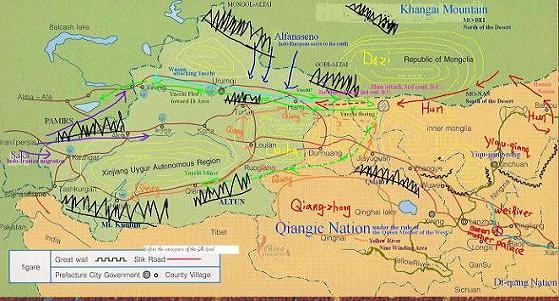
|
|
|
|
|
|
|
Sovereigns & Thearchs;
Xia-Shang-Zhou dynasties;
Zhou dynasty's vassalage lords;
Lu Principality lords;
Han dynasty's reign years
(Sexagenary year conversion table-2698B.C.-A.D.2018; 247B.C.-A.D.85)
|
|
The Sinitic Civilization - Book I is
available now at
iUniverse,
Barnes & Noble,
Amazon,
Google Play|Books
and
Nook.
The Sinitic Civilization - Book II is available at
iUniverse,
Amazon and Barnes & Noble.
Check out the 2nd edition preface that had an overview of the epact adjustment of the quarter remainder calendars of the Qin and Han dynasties, and the 3rd edition introductory that had an overview of Sinitic China's divinatory history of 8000 years.
The 2nd edition, which realigned the Han dynasty's reign years strictly observing the Zhuanxu-li calendar of October of a prior lunar year to September of the following lunar year, also cleared this webmaster's blind spot on the authenticity of the Qinghua University's Xi Nian bamboo slips as far as Zhou King Xiewang's 21 years of co-existence with Zhou King Pingwang was concerned, a handicap due to sticking to Wang Guowei's Gu Ben Bamboo Annals and ignoring the records in Kong Yingda's Zheng Yi.
Stayed tuned for Book III that is to cover the years of A.D. 86-1279, i.e., the Mongol conquest of China, that caused a loss of 80% of China's population and broke the Sinitic nation's spine.
Preview of annalistic histories of the Sui and Tang dynasties, the
Five Dynasties, and the two Soong dynasties
could be seen in
From the Khitans to the Jurchens & Mongols: A History of Barbarians in Triangle Wars and Quartet Conflicts
(The Barbarians' Tetralogy - Book III: available at iUniverse;
Google;
Amazon;
B&N).
(A final update of the civilization series, that is scheduled for October 2022, would put back the table of the Lu Principality ruling lords' reign years, that was inadvertently dropped from Book I during the 2nd update.)
|
|
Book II - Table of Contents:
Section Seven: The Han Dynasty
Relationship with the Huns 392
Chapter XXXIII: The Hunnic Empire 409
Origin of the Huns 409
The Rong & Di Barbarians in the Context of Relation to the Fiery Thearch, the San-miao Exiles and the last Xia Dynasty King 413
The Zhou, Qin and Jinn's Zigzag Wars with the Barbarians & the Construction of the Great Walls 417
Mote's Hun Empire, the Yuezhi People, and the Early Han Dynasty 424
The Huns & the Eastern Hu Barbarians 430
The Hunnic Government Structure & the Dragon Reverence 431
Chapter XXXIV: The Han Dynasty's Wars with the Huns 435
Chapter XXXVI: The Western Expedition, The Kunlun Mountain & Shan Hai Jing 489
Han Emperor Wudi Seeking Elixir from the Immortals on the Kunlun Mountain 491
Credible Geography Book on the Mountains Possibly Expanded to Include the Legendary Kunlun Mountain 493
Unearthly Things in the Mountains' Component of The Legends of Mountains & Seas 501
The Divination Nature and Age of the Seas' Component of The Legends of Mountains & Seas 506
Chapter XXXVII: Shan Hai Jing & The Ancient Divination 520
Chapter XL: The Latter Han Dynasty's Chronological History 560
The Relation with the Southern Huns 561
|
|
On the modern map, there was a tiny sand bridge between Chinese Turkistan and China, which was the narrow strip of desert sand to the east of Hami.
However, this corridor, today's Kumul line, could be a recent event.
There was the historical Da-qi4 blackhole desert to the east, nowadays called by the generic name Gobi. Specifically, near today's Hohhot, there was an ancient Chinese geological name called "qi4 kou", namely, the entry point into the Da-qi4 Desert.
The ancient Sino-Tibetan migration into the Tianshan Mountain could have come north from south, i.e., the Tibetan Plateau/Ruoqiang direction to the south --though this webmaster hesitated about the
passibility of the "Liu-sha" [quick sand] desert between Ruoqiang and Loulan (Lop Nur), which was another tiny sand bridge noticeable on the modern map.
Judging from Han Dynasty emissary Zhang Qian's change of mind on his return trip to go home along the Hami strip rather than going straight east across the Qiang-zhong [i.e., the middle Qiang nation land], we could tell that the northern strip was perhaps the most traveler-friendly.
That was Han Emperor Wudi's reign of B.C. 141-87, i.e., 141 BC and later, much later than the 3rd century BCE and 2nd century BCE Hun-Yuezhi wars.
(Could Zhang Qian had changed his mind in the hope of sneaking into the Hunnic territory to see the child he had with a Hunnic woman?)
While we don't know exactly what path Zhang Qian took to go west, noting that he was caught by the Huns and had stayed with the Huns for a dozen years, we could speculate that he must have taken the "safe" and "passible" path to the north, i.e., the path the Yuezhi exodus had taken, near the Tianshan and Altaic mountain ranges. We do know from his writings what path he took to return to China. Zhang took the path along the edge of the Kunlun Mountain, i.e., the southern edge of the Tarim basin/desert, and then along the Altun (Ah-er-Jin) Mountain, intending to then move through the "Qiang zhong", i.e., the middle Qiangic land, which was south of [contemporarily-named] Qilian.
Zhang's interest was to check out the source of the Yellow River, and he confirmed that there were two river systems in Chinese Turkistan,
i.e., the west-to-east Tarim River flowing down the Pamirs,
and the south-to-north Hotien River flowing down the "Nan shan" (southern mountain) which was what we Chinese called by the Kunlun Mountain since Han Dynasty Emperor Wudi (commonly-taken wrong reign 140-87 B.C. or 140-86 B.C.; nominal Oct 141-Dec 87 B.C.; actual Jan 141-Feb 87 B.C.)'s era - as the name Kunlun was personally pinpointed and sanctified by the emperor after reviewing Zhang Qian's report on the western territories.
However, Zhang Qian then changed mind, and in lieu of going east, he traveled north around the Lop Nur (Luobupuo area), passing the Loulan land for Gushi, which was between Loulan and today's Urumqi. On this northbound road, Zhang Qian was caught by the Huns again.
(In Chinese records, the same names were applied to the mountains in and outside of the Sinitic domain: the "Nan shan" [southern mountain] was commonly used for the Qilian Mountain range
which was itself originally named Mt. Kunlun, meaning magnificent and heavenly in Chinese, till the time the Huns defeated the Yuezhi [? at Lake Juyan]
and subsequently took over the western corridor from apparently the Qiangs [as the western corridor was to become the demarcation line between the Qiang people and the Hu people
in the Han Dynasty, known as the segregation of the Qiangs from the Huns via the Han military garrisons built along the corridor, i.e., one of the two Han Chinese policies to weaken the Huns],
and renamed the mountain to Qilian, meaning heavenly in the Hunnic terminology. After Zhang Qian's trip to the west,
the "Nan shan" [southern mountain] came to denote the current Kunlun Mountain that ran straight into Tibet from the Pamirs, after Han Emperor Wudi personally termed the newly-imported Khotan jade as the Kunlun Jade, i.e., an archaic name.
The Chinese, in addition, named the present Tianshan [heavenly] Mountain of Chinese Turkestan as the "Bei shan" (northern mountain] in relativity, and the Altaic Mountain by Jinshan [gold mountain] --where the later Turkic word Altay meant for 'gold'.)
What Gen. Li Guangli did was another interesting matter worthy of noting. With Zhang Qian's walking the circle around Loulan and the Lop Nur (Luobupo area), it was not hard to figure out the depth and radius of the "Liu Sha (Kumtag, i.e., flowing sand)" desert. Hence, with the "piercing-vacuum" knowledge, Gen. Li Guangli FORCEFULLY took the straight path across the quick-sand desert. In the first trip, he lost majority of his troops to both the desert and the fighting against the natives living to the west of the Lop Nur (Luobupo area), i.e., the so-called Peacock River or Salty River, a parallel river to the Tarim River, which ended dead in the sand, and was known as the so-called "salt lake" or "Puchang Sea", with a wild claim, which was also carried in the Mountain and Sea Legends, that the water, including that from the Pamir-Tarim flow, disappeared into the ground at the Lop Nur (Luobupo area) and flowed below the earth's surface to re-appear as the source of the water for the Yellow River.
After Han Emperor Wudi (commonly-taken wrong reign 140-87 B.C. or 140-86 B.C.; nominal Oct 141-Dec 87 B.C.; actual Jan 141-Feb 87 B.C.) defeated the Huns, first time ever, China built the forts and stationed the farming soldiers straight west towards the Salty Lake direction, which was a short-cut path undoubtedly and later went into oblivion when Han Dynasty's imperial power subsided over the Chinese Turkestan.
(Note that the seas or overseas' components of Shan Hai Jing, i.e., The Legends Mountain and Sea Legends, though carrying the names of countries like in today's Korea, Chinese Turkestan and India, etc., were not about geography at all but divination. The divination materials, similar to those in Shi1 Fa, Gui-cang Yi, the Wangjiatai divination script, and the divination in Mu-tian-zi Zhuan, served the same augury purpose of the late Warring States time period, albeit possessing their separate freelance or freewheeling traits.
For example,
The one eyed son of Lord Shaohao in the "great northern wilderness" (Da Huang Bei Jing) section of Shan Hai Jing, like the one-hand and one-eye 'shen-mu-guo' (the deep eye socket) state in the "Northern Outer Seas" section, which was speculated to be the legendary one-eyed state Arimaspi that was described by Herodotus in Histories as located north of Scythia and east of Issedones and linked to the three-eye stone statutes of the Okunev Culture in Minusinsk, could have its source in some one-eye bird in the northern mountain range of Shan Hai Jing, and the one-eye and three-tail 'huan' foxlike animal on Mt. Yiwang-zhi-shan in the western mountain range.)
Now, let's talk about the human migration.
There were widespread discussions of the 'Caucasoid' mummies in Chinese Turkestan, with the 'Loulan Beaty' purportedly dated 2000 B.C., while the southern 'cousins' in the Khotan area dated 100-300 B.C.
The timeline suggested a move from north to south, not west to east.
The 2000 B.C. Caucasoid mummies found in Loulan, in the Turpan Depression/Kumtag Desert, in-between Altaic/Tianshan Mountains and the Altun Mountain (Ruoqiang), could be the Indo-European people coming from the north of the Altaic Mountain [the Mongol Altaic Mountain of today], near the Alfanesievo (Alfanesevo) bronze culture.
Archaeologically speaking,
the admixture mummies in Chinese Turkestan pointed to the west-east interbreeding around 2000 B.C., after an interruption of contacts for like 6,000 years, as seen in the spread of the North China microlithic stone tools to the west about 10,000 years ago, including today's Chinese Turkestan, and its replacement of the European Paleolithic bladelet tools. About 3500-2500 B.C., the proto-Indo-Europeans, with the haplogroup R1b-M269, arrived at Minusinsk where they founded the Afanasevo chalcolithic culture and bronze culture (3200-2000 B.C.). People of the Afanasevo culture spread southward to today's Chinese Turkestan with the patented grey sand-textured (coarse) round-bottom pottery jars with engraved and embossed patterns. On basis of the archaeological aging, the successor bronze cultures in western Siberia would be the Okunev Culture (2500-1700 B.C.), Chemurchek Culture (1700-1400 B.C.), the Andronovo Culture (1700-1400 B.C.), and the Karasuk Culture (1400-800 B.C.).
Direction-wise, the Q-haplogroup people, i.e., cousins of the Caucasoid R-haplogroup people, likely arrived in today's Siberia heartland before the Last Glacial Maximum, while within the last 10,000 years, the C-haplogroup people pushed west and south from the northeastern direction and the N-haplogroup people pushed west and north from the southeastern direction. The patented Sinitic gourd-shaped colored and red potteries with a beam neck were seen to have penetrated to Central Asia. It could be the O3-haplogroup ancient Qiangs who brought the Sinitic colored (painted) potteries to today's Chinese Turkestan in late 3rd millennium and the early 2nd millennium B.C. While the millet and sorghum (as seen in the Begash site in Kazakhstan) could have spread westward to Central Asia with the colored potteries, the wheat products, sheep and goats, and the spoke-wheeled carts might have spread to China through this east-west contact along the two sides of the Tianshan Mountain.
The 'Tokharai' Yuezhi people, however, might not be the misnomer Indo-European as they could be part of the
barbarians whom Zhou King Muwang resettled at the origin of the Jing-shui River in the 11th century
B.C., among them, the later known five Rong groups of Yiqu, Yuzhi, Wuzhi, Xuyan (Quyan) and
Penglu, or the later Yiqu-rong barbarians as noted in the Warring States time period --which could
be the origin for the misnomer 'Indo-European' Yuezhi. The recent DNA analysis of the remains of
the ancient tombs had found the trace of the Q-haplogroup people at Pengyang of Ningxia, next to the
Western Yellow River Bend, and along the routes that the Yuezhi people had dwelled.
According to the recent DNA studies, before the emergence of the Indo-Europeans, the proto-Indo-Europeans, who had origin in southwestern Siberia approximately 38,000 years ago, relocated to the Volga area about 28200-22800 years ago, where they split into R1a (i.e., ancestors of modern Eastern Europeans, Indians) and R1b (i.e., ancestors of Basques, Celts and modern Western Europeans).
The Scythians, or the purportedly Indo-European 'Tokharai' Yuezhi, and majority stocks of the later Central Asians, belonged to the R1a offshoot.
There was the spread of North China's microlithic stone tools towards the west over 10,000 years ago.
The 6000-year-old Lingjiatan piglet-bird-head jade octagram could imply an ancient transfusion of the 10,000-year-old double-head emblem to Central Asia from China.
It would not be farfetched to state that the Sumerian cuneiform's speedy transformation to logophonetic, consonantal alphabetic and syllabic signs among different groups of the Central Asia and Middle Eastern people could imply the Sumerian script's likely origin as an out-of-area and imported product from let's say North China.
Here, with the existence of the obscure pre-2000 B.C copper-based metallurgy in northern China, such as the controversial brass pieces of the fourth and third millennium B.C., there was no rebutting the spread of ancient metallurgy technology to China from the west.
A tentative conclusion could be made in that the ancient world(s) did have some unknown form of discrete, disparate and non-continuous links between the East and West. However, this kind of East-West links were disrupted numerous times, with the consequence of loss of such links amounting to thousands of years in-between, as seen in the westward spread of the microlithic tools, the octagram, the double-head eagle emblem, the pictographic characters, and the red potteries.
http://www.sino-platonic.org/complete/spp115_chinese_proto_indo_european.pdf provides another perspective of looking at things of the past from the perspective of language cognates. Rather believing that the Indo-Europeans ever invaded China and gave the Sinitic people the language, we could actually deduce that "Old Chinese", for its 43% correlation with the Proto-North-Caucasian, rather 23% with the Proto-Indo-European, was the source for both the cognates of the Proto-North-Caucasian and the Proto-Indo-European. This is because our cousins, i.e., the N haplogroup people, relocated to North Asia and then to Estonia, Latvia, Finland and Scandinavia, bringing along the Sinitic language to the Proto-North-Caucasian who in turn gave it to the Proto-Indo-European.
Linguistically, the proto-Caucasian should fall under the umbrella of the Dene-Caucasian (Sino-Caucasian) Language Family that encompassed the [Proto-North-]Caucasian, Yeniseian and Sino-Tibetan languages.
In 2012, Li Hongjie of Jirin University published a paleogenetic study of the ancient DNA of prehistoric people dwelling in northeastern China, northern China, and northwestern China, with the results showing that the predominant population in Niuheliang of southwestern Manchuria, Dadianzi of Inner Mongolia and Hami of northeastern Chinese Turkestan over 3000-5000 years ago, that roughly matched with the Xiajiadian Culture and Hongshan Culture's timeframe, belonged to the Y-chromosome people of the N-haplogroup type, namely, people related to ancestors of the Finnish, Sami and Hungarian people. And it would be about 2000-4000 years ago that the R-haplogroup and Q-haplogroup people began to be seen in Chinese Turkestan and northwestern China. Following this timeline, it is more plausible that people of the Xia and Shang dynasties of ancient China had the company of the N-haplogroup people, with both the Sinitic O-haplogroup and the N-haplogroup people actually sharing the same origin for over 20,000 years, and the Zhou people could be interfacing with the Q-haplogroup people towards the northwest, which implied that the northern barbarians or the Huns' composition could have changed through history. The Huns, for their position and timeline of appearance, more likely belonged to the Q-haplogroup people than the N-haplogroup people, with both groups plus the ancient Sinitic Chinese likely falling under the same proto-Borean (Northern) language family.
This webmaster, possessing the amber-colored or hazel eyes with a greenish ring, had been found to possess about 15% ancient Euro-Asian hunters' gene, specifically, N1a (N-M96 (N-CTS7095, N-P189), a branch of the Finno-Ugrian people.
Though, Yuezhi might not be of this group of people coming from north.
Further diggings in the Loulan area, i.e., the ancient Salty Lake and Salty River (Peacock Rover), led to a site called by Xiaohe or the Little River, next to the Salty River (Peacock Rover), where the Mongoloid Mummies were discovered.
It appears to this webmaster that there was indeed good carbon dating on the Xiaohe excavation, which stated that "The entire necropolis can be divided, based on the archeological materials, into earlier and later layers. Radiocarbon measurement (14C) dates the lowest layer of occupation to around 3980 ± 40 BP (personal communications; calibrated and measured by Wu Xiaohong, Head of the Laboratory of Accelerator Mass Spectrometry, Peking University), which is older than that of the Gumugou cemetery (dated to 3800)." The article claimed that the 'Mongoloid' mtDNA had similarity to some present South Siberian population. (For details, check http://www.biomedcentral.com/1741-7007/8/15 for the full article "Evidence that a West-East admixed population lived in the Tarim Basin as early as the early Bronze Age".)
The linking of this certain mtDNA in the Xiaohe/Loulan area to a modern Siberian population could be said to be circumvential at best since a lot of things might had happened in the past 4000 years.
That is, the linkage to the Siberian population could be actually an effect, not a source.
This area kind of had the same timing as the Mongoloid mummies that were discovered to the north and east of the Tianshan Mountain.
More than what was found about the mtDNA at Xiaohe/Loulan, there were mummies of the Khams-Tibetan type found to the further north,
in the Tianshan-Altaic mountain areas, which presented a much more convincing point that the proto-Tibetan Qiangs, from the south, had indeed crossed over the strip of the sand desert near Loulan to reach the north side of Tianshan.
Possibly, the Khams [proto-]Tibetan, after reaching the Tianshan Mountain Range, moved towards Hami (Qumul) to the east, where there were the Hami (Qumul) Mongoloid mummies excavated.
Note that today's Kham Tibetans were not far away from the historical Sanxingdui (three star) Excavations in western Sichuan, that was discovered by Gaway Hann (an American professor of the former Hua-xi [west China] University),
a Neolithic/Bronze culture dating from about 4800 to 2800 years ago, as well as a bridge providing Southwest China's tin to the Shang dynasty
and the Zhou dynasty.
(On the mtDNA side, the genes found among the northern Chinese women were of the mt-D5'6 type which derived from mt-D that had a history of 48000 years, and the genes among the southern Chinese women were of mt-R9 (subclade F) and mt-R11'B (subclade B) which derived from haplogroup R that had a history of 52-81000 years.
The mt-D genes were the dominant genes spanning from Asia to the American continents.
That is, the female genes had a much older history than the male genes in Asia, and could not be used for dating the prehistoric human migration history.)
While the water coming down the mountain may not be salty, the salty lake did not
portend to be a source of the fresh water supply that could supply any civilization.
This webmaster's point was that the Loulan area was not a permanent settlement. Either the Indo-Europeans had come earlier than the Khams [proto-]Tibetans, or the Khams [proto-]Tibetans earlier than the Indo-Europeans.
It could be possible that the Loulan area had seen the human settlements rise and fall several times in the ancient times.
(The Peacock River that flows into the Lop Nur Lake
was known as the salty water river, and the lake was named the Salty Lake.
The terminologies could not be earlier than the Han dynasty's campaign against the Huns, and in another word, the same terminology as carried in Shan Hai Jing could mean that the said book could not have been written earlier than the Han dynasty wars with the Huns.)
This webmaster found Jan Romgard to have read much more about this mummy topic, and have a much better presentation. See http://www.sino-platonic.org/complete/spp185_silk_road.pdf.
After spending some time reading "SINO-PLATONIC PAPERS", you could see that the article said that "the Yanbulake site excavated in the mid
1980s, eight out of 29 examined skeletons were estimated to be of Caucasian origin while
the others were defined as Mongoloid, or to be more specific, 'similar' to the 'Khams Tibetan type'."
What he cited was the research showing that the so-called "Asian" mtDNA mummies were related to the Khams Tibetans, "a group within the ethnic Tibetan community situated in eastern Tibet" today.
In this sense,
no matter the Mongoloid mummies in Chinese Turkestan were linked to today's South Siberian people or today's Kham (Xi-kang) Tibetans, they could all be traced to the
original San-miao exile --which was an epic.
This webmaster's reasoning was that the Qiangs had a dominance in the area since China's prehistory, like 5000 years ago, at least the time of the Yellow Emperor [Huangdi], and they controlled the southern rim, southeastern rim and eastern rim of the Taklamakan Desert, and somehow around 2000 B.C., penetrated northward to reach the two sides of the Tianshan mountain range, while the so-called Caucasoid oases in their path, namely, the Loulan area, might have risen and fallen numerous times in history -- if they ever existed there prior to the penetration by the Khams [proto-]Tibetans.
Or the other way around, the Khams [proto-]Tibetans could be speculated to have penetrated to the two sides of the Tianshan mountain range earlier than the Indo-Europeans, and subsequently encountered the Indo-Europeans near the Tianshan Mountain, and ultimately the Indo-Europeans gradually dominated over the area and eliminated the trace of the Khams [proto-]Tibetans, pressing them back to the southeastern rim of the Taklamakan Desert.
According to Sima Qian, the 'San Miao' people were mostly relocated to western China to guard against the western border, i.e., LIU-SHA (drift sand), known as Kumtag today, with the borderline covering the Blackwater Lake at today's Mongolia border
(which was disputed by modern Chinese writer Chen Ping to mean the Blackwater River to the south of Qilian and near the Bailongjiang River of Sichuan --a seismically active place where Xu Xiangqian's Red Army
travelled through).
Lord Shun (? 2257 - 2208 B.C.; reign 2044-2006 with rule of 39 years and life of 100 years per Zhu Yongtang's adjustment of
The Bamboo Annals) relocated them to western China as a punishment for their aiding Dan Zhu (the son of Lord Yao) in rebellion. To the west of today's Dunhuang of Gansu Province was a mountain named 'San Wei Shan' where the Three Miao peoples were exiled. ('San Wei Shan', a three-peak mountain across the Dunhuang Grotto, literally meant for the San-miao Precarious Mountain.)
This could lead to a sound speculation that the Sino-Tibetan speaking San Miao people had dwelled in Gansu much earlier than the later Indo-European Yuezhi people --should they had ever moved east to the Juyan Lake at all to be in conflicts with the Huns in the 3rd century B.C. (The more likely case was that: the Yuezhi people were not Indo-European but a subset of the exiled barbarians in Northwest China, who were to become the five Rong groups named as Yiqu, Yuzhi, Wuzhi, Xuyan and Penglu at the time of Zhou King Muwang's northwestern campaign in the 10th century B.C.E.)
The approximate date would be after 2258 BC [or more likely after 2044 B.C.E. per forgery contemporary version of The Bamboo Annals] for the San Miao relocation.
The San-miao migration was an epic that was extensively researched by Feng Shi, Bian Ren and Chen Ping et al
[the ranks among whom could have been the most notorious forgery generation of the P.R.C. in the late 20th century].
While the route of research
in linking the excavated ancient pictographs [ ! possibly a forgery ! ]
on the Shandong peninsula to Southwest China's Yi-zu minority's writing was tenuous,
the extrapolations on basis of
historical namings of the Yi (misnomer Dong-yi) statelets and tribes as well as the historical namings of places in the Anhui-Henan-Hubei tri-provincial areas are sound enough
to trace the ancient tribal migration to derive several conclusions: i) that the ancient Chi-you Tribe was the Yi people who migrated towards Anhui-Henan-Hubei to
mix up with the San-miao people at the Yangtze; ii) that elements of the Yi tribes joined the San-miao's exile towards Northwest China where they developed into
the later Xian-yun barbarians (Huns) as well as co-mingled with the natives to become the ancient Jiang-rong; and iii) that a branch of the San-miao/Yi exiles
moved south to Southwest China to become the Di-qiang barbarians and today's Yi-zu minority people.
(The character 'Yi', as shown above, was originally a neutral-meaning character denoting the people living in today's eastern China and along the coast,
but later got mutated in the meaning to mean for the barbarians in the east, and
later again expanded to be more an inclusive word to mean all aliens or barbarians.
As Wang Zhonghan had researched, the ancient Huns belonged to the Jiang-rong group, not the Tungunsic group that attacked west from Manchuria.)
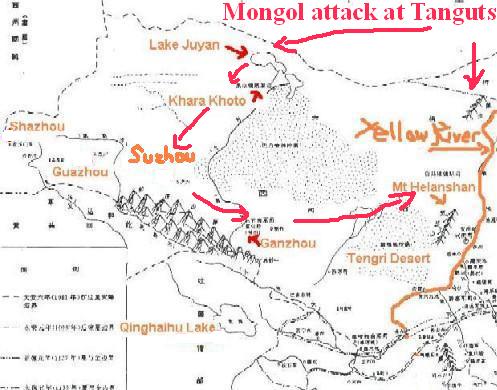
There could have been a striking similarity between the Mongol attack at the Tanguts in the 13th cent. A.D. and the Hun attack at the Yuezhi in the 3rd cent. B.C.
Both took the desert road towards the Blackwater Lake.
(Hunnic chanyu Mote's father had of course first attacked the Yuezhi at about 209 B.C.E. The later Mongols attacked west along the desert road while Han Dynasty general Huo Qubing took the same direction to attack the Huns.)
It kind of gives you a picture as to how chanyu Mote's Huns first raided to the west against the Yuezhi, forcing the Yuezhi Major to flee west while the elderly and the children, i.e., the Yuezhi Minor,
crossed the Qilian mountain to seek asylum with the Qiangs, and per Yu Taishan, continued to move on towards the southeastern rim of the Taklamakan Desert,
towards
Khotan where the people were recorded to be Chinese or Hua-xia-looking, throughout China's Han and Tang dynastic records, till annihilated sometime during the Islamic invasion of the
Buddhist stronghold of Khotan or possibly during the earlier Turkic-Uygur conquest of the Chinese Turkistan.
(Note the discovery of the so-called 100-300 BC Caucasoid in Khotan, which matched with the escape timeframe of the Yuezhi Minor.
Another recent writing on Zhou King Muwang's travelogue at the imperialchina.org blog, available in pdf format
[Mu-tian-zi.pdf],
exhibited the westernmost extent of the ancient Chinese kingdom to be no more than the edge of the Kumtag Desert and right at the Black Water Lake.)
This webmaster tried to reconcile Sima Qian's statement in regards to the migration of the Lesser Yuezhi,
in the aftermath of the Huns' attack in the last years of the 3rd century BCE,
to give the Yuezhi people some credit of living a bit further to the east, i.e.,
staying somewhere near the Blackwater Lake [i.e., the Ejina or Juyan Lake].
By making this assumption, this webmaster assumed that the Lesser Yuezhi people, namely, the sick, the elderly and the young,
climbed the Qilian-shan Mountain [today's Qilian-shan, not what Yu Taishan et al had postulated to be the Tianshan
or the Heavenly Mountain Range in Turkestan] to live among the Qiangs
--unless Sima Qian actually meant that the Huns had raided deep into the Chinese Turkestan in the first place,
driving the Greater Yuezhi into a flee towards the Ili area to the west and the Lesser Yuezhi into a move across today's Tianshan
or the Heavenly Mountain Range to live with the Qiangs in Khotan, at the southeastern rim of the Taklamakan Desert,
a historical dwelling place of the Qiangs since the late 3rd millennium BCE.
(According to the excavated bamboo strips (slips) from the Lake Juyan area, the original Yuezhi people, after 80 years or 3-4 generations since the first Hunnic attack against them, still dwelled in large numbers at the Lake Juyan.)
In conclusion, there were two points of contact between the west and the east, one time around the 2000 BCE, and another time in the 4th century BCE (or more exactly the 3rd century BC when the Huns attacked the Yuezhi, triggering the chain reaction to the west).
The demarcation point of the 4th century BCE or the 3rd century BCE was important in determining the second point of contact between the Mongoloid and the Caucasoid,
after the first Mongoloid-Caucasoid mummy contact around 2000 BCE near today's
Tianshan or the Heavenly Mountain, known as Bei-shan or the Northern [Turkestan] Mountain at Han Emperor Wudi (commonly-taken wrong reign 140-87 B.C. or 140-86 B.C.; nominal Oct 141-Dec 87 B.C.; actual Jan 141-Feb 87 B.C.)'s timeframe.
It would be in the 4th century BCE that Shi-zi first wrote down the sentence speculating that 2000 years earlier, at the time of the
Yellow Overlord, there were the deep-eyesocket people living to the north.
This brilliant piece of work by Shi-zi apparently adopted some then-current information available as of the 4th century BCE, in a similar fashion to
the later forgery Guan Zi which, relying on the then-current information available as of the 1st century AD, claimed that
Qi Hegemony Lord Huan'gong had crossed the Kumtag Desert to conquer the Yu-shi [or misnomer Yuezhi] people.
(Shi-zi could be a latter-day add-on as well since half of the original texts were lost in the Three Kingdom time period, and the majority of the re-compiled texts were lost again in the Soong Dynasty. One important fact about Shi-zi that this webmaster wants to emphasize is that it could be on the same par as the classics Shan Hai Jing, i.e., the Book of Mountains and Seas, and the author or the authors of some of the contents of the two books of Shi Zi and Shan Hai Jing could be of the same origin.)
Extrapolation of prehistoric people using the mitochondrial and nuclear DNA analysis, as well as cranial analysis, on the ancient remains extracted from the archaeological sites
In 2012, Li Hongjie of Jirin University published a study of the ancient DNA analysis of the Y chromosomes of prehistoric people dwelling in northeastern China, northern China, and northwestern China.
Northeast (southeastern Inner Mongolia)
Niuheliang, Lingyuan, the Hongshan Culture, 5000 YBP, 4 N, 1 C*, 1 O
Halahaigou, the Hongshan-Xiaoheyan Culture, 4500 YBP, all N
Dadianzi, the Lower Xiajiadian culture, 3600 YBP, 3 N, 2 O3
Dashanqian, the Upper Xiajiadian Culture, 3000 YBP, 1 C, 3 N1c, 1 N,
2 O3-M117, 2 O3-M324
Jinggouzi, 2500 YBP, all C
Northwest (Chinese Turkestan)
Xiaohe, Xinjiang, 3500-4000 YBP, 11 R1a1a, 1 K*
Hami (Tianshan-Beilu), Xinjiang, 3300-4000 YBP, 5 N, 1 C
The Balikun Basin (Heigouliang), Xinjiang, 2000 YBP, 6 Q1a*, 4 Q1b, 2 Q
Northwest (Ningxia-Qinghai-Gansu)
Pengyang, Ningxia, 2500 YBP, all Q1a1-M120
Xining (Taojiazhai), Qinghai, 1500 YBP, all O3-M324
North
Miaozigou, central-south Inner Mongolia, the Yangshao culture, 5500 YBP, all N
Yuxian County (the Sanguan site), Hebei, the Lower Xiajiadian Culture,
3400-3800 YBP, all O3
Jiangxian county (the Hengbei-cun village site), Shanxi, 2800-3000 YBP,
a Peng-guo state, 9 Q1a1, 2 O2a-M95, 1 N, 4 O3a2-P201, 2 O3, 4 O*.
What could be extrapolated from the above data was that the Sino-Tibetan O3-haplotype people, moving along the south-to-north Yellow River east of the Taihang mountain range, had pushed northward to the western Liaoning area of today's Manchuria, about the origin of the Liao-he River, and stayed there 5000 years ago.
In the Sinitic homeland of today's southern Shanxi, there was the excavation of the Taosi Culture (2500/2400 B.C.-1800 B.C.) since 1978, with the early-stage Taosi residents genetically identified to be of the O3-M122, subhaplogroup O3-M134 type.
According to the continuing archaeological excavation and analysis, the early Taosi people, hundreds of years later, were destroyed by the mid- and late-stage people with slightly different cranial characteristics, with some pending genetical analysis to possibly infer the western move of the O2/O1 haplotype people.
The cranial analysis of the ancient dwellers as far north as the Nen-jiang River (Pingyangzhen, Tailai, Heilongjiang) shed light on the audacious northernmost penetration of the O-haplotype people to the heartland of the C-haplotype people.
Moving ahead of the O3 Sino-Tibetan people would be the N-haplotype cousin-tribe which populated the whole belt of today's Inner Mongolia front about 5500 years ago. To the east, the N-haplotype people converged with the O3-haplotype cousins in today's western Liaoning area for the next 2500 years. To the west, the N-haplogroup people reached today's northern Chinese Turkestan about 4000 years ago, replacing the C-haplogroup people and the proto-Europeans called the Andronovo type.
On basis of genetic evidences, the haplogroup O3a1c-002611 Sinitic people was responsible for engendering the Yangshao and Longshan civilization, and partially with the N-haplogroup people, engendering the Hongshan civilization.
The C-haplogroup people, who arrived in Asia like 50,000 years ago but were marginalized towards Siberia, northeastern Manchuria and coastal islands, began to gradually push back to the south, taking over the western Liaoning area about 2500 years ago and coinciding with the historical events known as the Hun-Donghu [i.e., the Eastern Hu barbarians] Wars around the ancient Songmo [pine desert] area.
The Q-haplotype (Q1a1-M120) people, whose main group had moved across the Bering Straits to the American continent 10,000-15,000 years ago, saw some remnants migrating southward.
About 3000 years ago, the Q-haplotype people, with a weight of 41% among the remains analyzed, were seen to have penetrated south to have reached Jiangxian in today's southern Shanxi Province, as seen in the remains found in the possibly [patented Xia dynastic] Si-surnamed Peng-guo state, next to the Jinn Principality.
From the Peng-guo's intermarriage with the Ji-surnamed Rui-guo and Bi-guo states, it could be sensed that the Peng-guo people did have something which made them prestigious, possibly the bronzeware utensils.
The purportedly same 'Peng' character found on the Shang oracle bones could mean the existence of the advanced bronze culture Peng-guo state as early as the Shang dynasty time period.
The Q1a1-M120 people, found in Pengyang, also populated today's western Yellow River Bend about 2500 years ago, coinciding with the historical events known as the Hun-Yuezhi Wars.
(The Yuezhi people, who were evicted by the Huns towards the Amu Darya and Syr Darya river area, were said to have left behind a Yuezhi Minor group that relocated to the south of Mt. Qishan, where cranial analysis of the ancient remains, such as from the Mogou (grind ditch) cemetery in Lintan, Gansu, found only the continuous flow of the Sino-Tibetan population among the Siwa, Siba and Xindian culture sites.
Note that the Pengyang locality was to the further west of Qingyang which in turn was to the west of the Zhou people's south-north Binxian-Qishan habitat, with the Zhou people's southern relocation having something to do with its historical conflict with the Gui-fang/Xunyu/Rongdi people, a group of people having intermarriage with the legendary fire guardian Zhu-rong (known as Lu-zhong-shi in the Di Xi section of Da Dai Li-ji) and carrying the archaic Kui surname, who had extensive presence in the northern China's domain and a history as early as the start of the Sinitic civilization.
That is, the Zhou ancestors were separated from the Q1a1-M120 people by the Gui-gang/Xunyu/Rongdi barbarians.
The Q1a1-M120 people, however, could be closely situated to the J2-surnamed Mixu state in today's Lingtai of Gansu Province, i.e., a state that Zhou King Wenwang conquered in the early 11th century B.C. and Zhou King Gongwang eliminated in the late 10th century B.C.
This webmaster, having debunked the Aryan bearer theory for the bronze, chariot and wheat's arrival in China, sorted through the history records to find substantiation but could not come up with any evidence.
The non-Sinitic evidence would be the non-Asian-continent genetical mark of Q1a1-M120 which was found among the ancient Pengyang/Jiangxian tomb remains and still had a minor presence in today's Chinese population.)
https://www.ncbi.nlm.nih.gov/pmc/articles/PMC5255561/ carried an article stating that "Y chromosome suggested Tibeto-Burman populations are an admixture of the northward migrations of East Asian initial settlers with haplogroup D-M175 in the Late Paleolithic age, and the southward Di-Qiang people with dominant haplogroup O3a2c1*-M134 and O3a2c1a-M117 in the Neolithic Age. Haplogroup O3a2c1*-M134 and O3a2c1a-M117 are also characteristic lineages of Han Chinese, comprising 11.4% and 16.3%, respectively. However, another dominant paternal lineage of Han Chinese, haplogroup O3a1c-002611, is found at very low frequencies in Tibeto-Burman populations, suggesting this lineage might not have participated in the formation of Tibeto-Burman populations." Furthermore, the O3a1c-002611 Sinitic people, a lineage this webmaster belonged to, contained a predictable 5000-year-old admixture of about 10-20% Eurasian Q-haplotype heritage --that the northwestern O3a2c1*-M134 and O3a2c1a-M117 people lacked.
Since the O3a1c-002611 people were separated from the Northwestern cousins and Tibeto-Burmese at an early age, for it to have a part in the history of Northwestern China, the explanation would be to treat the Haplogroup O3a2c1*-M134 and O3a2c1a-M117 people as the historical Qiang and Hu barbarians, with the latter's paleo-Northwestern genes replacing the paleo-North-China and paleo-Central Plains genes of O3a1c-002611 Sinitic people by the Soong dynasty (A.D. 960-1279), that was likely triggered by the multiplication of the Tang dynasty's imperial house that had its origin from the Western Corridor.
Similarly, the Soony dynasty royal house also claimed origin from the west, i.e., the Tianshui-jun commandery which was the Qin ancestors' fief 3000 years ago.
This webmaster, with clear-cut amber [or hazel] eyes carrying a greenish ring, had been found to possess about 15% ancient Euro-Asian hunters' gene, similar to the N or Q haplogroup people in the Russian Siberian province.
The chromosomes showed majority to be O3a1c-002611, some Austronesian elements for our family's dwelling in southeastern China in the last 150 years, the N-haplogroup genes, and the next level being the J-haplogroup genes, with one chromosome linked to an Iranian element.
Li Hui, in the article "Y chromosomes of prehistoric people along the Yangtze River", concluded that the analysis of the ancient Yangtze River people showed that "at least 62.5% of the samples belonging to the O haplogroup, similar to the frequency for modern East Asian populations. A high frequency of O1 was found in Liangzhu Culture sites around the mouth of the Yangtze River, linking this culture to modern Austronesian and Daic populations. A rare haplogroup, O3d, was found at the Daxi site in the middle reaches of the Yangtze River, indicating that the Daxi people might be the ancestors of modern Hmong-Mien populations, which show only small traces of O3d today."
More recent genetical studied concluded that Y Chromosomes of 40% Chinese Descend from Three Neolithic Super-Grandfathers, with the main patrilineal expansion in China having "occurred in the Neolithic Era and might be related to the development of agriculture", corresponding with the middle Neolithic cultures such as Yangshao (6.9-4.9 kya) and Dawenkou Culture (6.2-4.6 kya) in the Yellow River Basin.
|
|
|
|
|
|
|
Sovereigns & Thearchs;
Xia-Shang-Zhou dynasties;
Zhou dynasty's vassalage lords;
Lu Principality lords;
Han dynasty's reign years
(Sexagenary year conversion table-2698B.C.-A.D.2018; 247B.C.-A.D.85)
|
|
The Sinitic Civilization - Book I is
available now on
iUniverse,
Barnes & Noble,
Amazon,
Google Play|Books
and
Nook.
The Sinitic Civilization - Book II is
available at
iUniverse,
Amazon and Barnes & Noble.
Check out the 2nd edition preface that realigned the Han dynasty's reign years strictly observing the Zhuanxu-li calendar of October of a prior lunar year to September of the following lunar year, and the 3rd edition introduction that had an overview of Sinitic China's divinatory history of 8000 years.
The 2nd edition preface had an overview of the epact adjustment of the quarter remainder calendars of the Qin and Han dynasties, and the 3rd edition introduction had an overview of Sinitic China's divinatory history of 8000 years.
The 2nd edition realigned the Han dynasty's reign years strictly observing the Zhuanxu-li calendar of October of a prior lunar year to September of the following lunar year.
Stayed tuned for Book III that is to cover the years of A.D. 86-1279, i.e., the Mongol conquest of China, that caused a loss of 80% of China's population and broke the Sinitic nation's spine.
Preview of annalistic histories of the Sui and Tang dynasties, the
Five Dynasties, and the two Soong dynasties
could be seen in
From the Khitans to the Jurchens & Mongols: A History of Barbarians in Triangle Wars and Quartet Conflicts
(The Barbarians' Tetralogy - Book III: available at iUniverse;
Google Play|Books;
Amazon;
B&N).
(A final update of the civilization series is scheduled for October of 2022, that would put back the table of the Lu Principality ruling lords' reign years, that was inadvertently dropped from Book I during the 2nd update.)
|
|
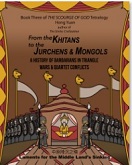 Now, the Scourge-of-God-Tetralogy.
Book III of
The Barbarian Tetralogy, i.e., this webmaster's barbarism series, is released in October of 2022 by iUniverse. This barbarism series would be divided into four volumes covering the Huns, the Xianbei, the Turks, the Uygurs, the Khitans, the Tanguts, the Jurchens, the Mongols and the Manchus.
Book I of the tetralogy would extract the contents on the Huns from
The Sinitic Civilization-Book II,
which rectified the Han dynasty founder-emperor's war with the Huns on mount Baideng-shan to A.D. 201 in observance of the Qin-Han dynasties' Zhuanxu-li calendar.
Book II of the Tetralogy would cover the Turks and Uygurs.
And
Book IV would be about the Manchu conquest of China.
Now, the Scourge-of-God-Tetralogy.
Book III of
The Barbarian Tetralogy, i.e., this webmaster's barbarism series, is released in October of 2022 by iUniverse. This barbarism series would be divided into four volumes covering the Huns, the Xianbei, the Turks, the Uygurs, the Khitans, the Tanguts, the Jurchens, the Mongols and the Manchus.
Book I of the tetralogy would extract the contents on the Huns from
The Sinitic Civilization-Book II,
which rectified the Han dynasty founder-emperor's war with the Huns on mount Baideng-shan to A.D. 201 in observance of the Qin-Han dynasties' Zhuanxu-li calendar.
Book II of the Tetralogy would cover the Turks and Uygurs.
And
Book IV would be about the Manchu conquest of China.
From the Khitans to the Jurchens & Mongols: A History of Barbarians in Triangle Wars and Quartet Conflicts
, i.e., Book III of
the Scourge-of-God-Tetralogy,
focused on the Khitans, Jurchens and Mongols, with the missing one-year history of the Mongols' Central Asia campaigns rectified.
This webmaster, other than the contribution to the Sinology studies in rectifying the Huns' war to 201 B.C., and realigned the missing one-year history of the Mongol Central Asia war, had one more important accomplishment, i.e., the correction of one year error in the Zhou dynasty's interregnum (841-828 B.C. per Shi-ji/840-827 per Zhang Wenyu) in
The Sinitic Civilization-Book I, a cornerstone of China's dynastic history.
|
The Scourges of God: A Debunked History of the Barbarians (available at iUniverse|Google Play|Google Books|Amazon|B&N)
From the Khitans to the Jurchens & Mongols: A History of Barbarians in Triangle Wars and Quartet Conflicts
(The Barbarians' Tetralogy - Book III)
Epigraph,
Preface,
Introduction,
Table of Contents,
Afterword,
Bibliography,
References,
Index
|
|
|
|

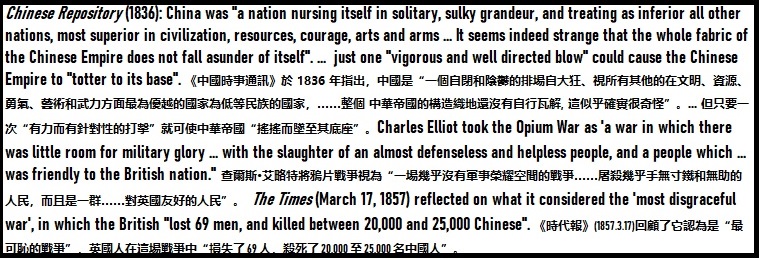
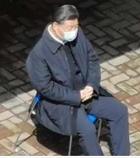








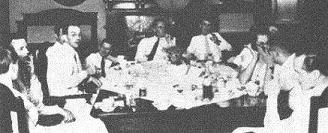
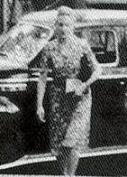
![Though, Anna Wang [Anneliese Martens], in her memoirs, expressed jealousy over Gong Peng by stating that the Anglo-American reporters had flattered the Chinese communists and the communist movement as a result of being entranced with the goldfish-eye'ed personal assistant of Zhou Enlai](GongPeng.jpg)
